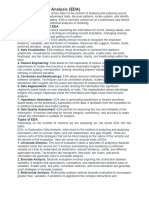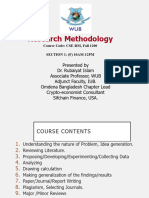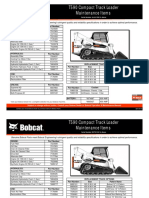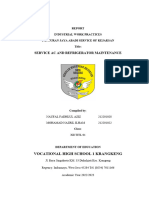0% found this document useful (0 votes)
85 views58 pagesUnit 2
This document discusses data collection and preprocessing. It covers topics like data acquisition methods and sources, primary and secondary data sources, data file formats, where to get data, exploratory data analysis goals and types using Python libraries. Exploratory data analysis (EDA) is used to analyze and summarize datasets by examining them for errors, patterns and relationships between variables using visualization, descriptive statistics and other techniques. EDA helps clean data and generate hypotheses for further analysis.
Uploaded by
radhikakumbhar2978Copyright
© © All Rights Reserved
We take content rights seriously. If you suspect this is your content, claim it here.
Available Formats
Download as PDF, TXT or read online on Scribd
0% found this document useful (0 votes)
85 views58 pagesUnit 2
This document discusses data collection and preprocessing. It covers topics like data acquisition methods and sources, primary and secondary data sources, data file formats, where to get data, exploratory data analysis goals and types using Python libraries. Exploratory data analysis (EDA) is used to analyze and summarize datasets by examining them for errors, patterns and relationships between variables using visualization, descriptive statistics and other techniques. EDA helps clean data and generate hypotheses for further analysis.
Uploaded by
radhikakumbhar2978Copyright
© © All Rights Reserved
We take content rights seriously. If you suspect this is your content, claim it here.
Available Formats
Download as PDF, TXT or read online on Scribd
/ 58






















































































